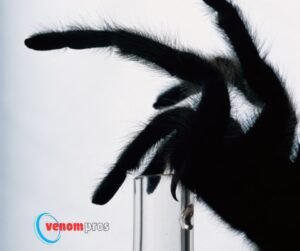
Toxic Tales
The natural world is brimming with beauty, wonder, and danger. Among its most fascinating yet fearsome inhabitants are venomous animals—creatures that possess the power to kill with a single bite or sting. This article delves into some of these harrowing encounters, exploring the terrifying reality of venomous animals and the incredible tales of those who have lived to tell the tale.
The Power of Venom
Venom is one of nature’s most potent weapons. It is a complex mixture of proteins, enzymes, and other molecules that can cause a range of effects, from mild irritation to severe pain, paralysis, or even death. The primary purpose of venom in animals is to immobilize prey or deter predators, but when humans accidentally come into contact with these creatures, the consequences can be dire.
Venomous animals are spread across the animal kingdom, from reptiles like snakes to invertebrates like jellyfish and arachnids like spiders and scorpions. Each has evolved its own unique blend of venom, tailored to its environment and the prey it hunts. However, when these venoms are unleashed on humans, they often have devastating effects, leading to a race against time to administer life-saving treatment in Toxic Tales.

The Serpent’s Strike: Surviving Snakebites
Among the most feared venomous animals are snakes. Each year, millions of people around the world are bitten by snakes, with tens of thousands of these bites proving fatal. In regions like sub-Saharan Africa, South Asia, and parts of Latin America, snakebite envenomation is a major public health issue. Yet, for every tragic loss, there are stories of survival that highlight the bravery of the victims and the skill of the medical professionals who treat them.
Despite the snake’s reputation as one of the most venomous in Africa, Schmidt, a leading expert in his field, initially believed the bite to be non-lethal. He meticulously documented his symptoms as they developed, offering a rare first-person account of envenomation. Sadly, Schmidt succumbed to the venom within 24 hours, but his observations provided valuable insights that have since contributed to the understanding and treatment of snakebites in Toxic Tales.
In contrast, the story of American hiker Todd Endris, who survived an attack by a great white shark in 2007, demonstrates the incredible power of the human will to survive. After being bitten multiple times, Endris managed to fend off the shark and swim to shore, where he received immediate medical attention. Remarkably, Endris made a full recovery and continued to advocate for shark conservation, demonstrating that even the most terrifying encounters with venomous or dangerous animals can inspire positive change in Toxic Tales.
Arachnid Aggression: Encounters with Spiders and Scorpions
Spiders and scorpions, though often small in size, can deliver venom that packs a powerful punch. The black widow spider, for instance, is notorious for its neurotoxic venom, which can cause severe pain, muscle cramps, and even death in vulnerable individuals. However, despite their fearsome reputation, most black widow bites are not fatal, thanks to the availability of antivenom and supportive care in Toxic Tales.
One remarkable survival story involves a young boy from Arizona who was bitten by a bark scorpion, one of the most venomous scorpions in North America. The venom of this scorpion can cause severe neurological symptoms, including uncontrollable muscle twitching, difficulty breathing, and intense pain. In this case, the boy’s parents quickly recognized the severity of the situation and rushed him to a hospital, where he was treated with antivenom. The boy made a full recovery, but his story serves as a reminder of the importance of swift action and medical intervention in the face of venomous bites and stings in Toxic Tales.
In another instance, a woman in Australia survived a bite from a funnel-web spider, one of the most dangerous spiders in the world. Funnel-web spider venom is known for its rapid onset of symptoms, including difficulty breathing, confusion, and loss of consciousness. The woman was fortunate to receive antivenom in time, which saved her life. Her experience highlights the effectiveness of modern medical treatments and the importance of awareness and education about venomous creatures in Toxic Tales.

Marine Menace: Surviving the Sting of the Ocean’s Deadliest Creatures
The ocean is home to some of the most venomous creatures on the planet, including jellyfish, cone snails, and stonefish. These marine animals may appear innocuous, but their venom can be deadly, especially to unsuspecting swimmers and divers in Toxic Tales.
The box jellyfish, found in the waters of the Indo-Pacific region, is often regarded as one of the most venomous animals in the world. Despite this, there are stories of individuals who have miraculously survived encounters with box jellyfish. One such case is that of Australian schoolgirl Rachel Shardlow, who was stung by a box jellyfish while swimming in a river. Despite losing consciousness and suffering severe injuries, Rachel survived, thanks to the quick response of her brother, who pulled her from the water, and the medical team that provided life-saving care in Toxic Tales.

Conclusion: A Dance with Danger
The world of venomous animals is one of peril and fascination. The stories of survival against these creatures are a testament to the indomitable human spirit and the incredible advancements in medical science that have made it possible to overcome even the most deadly encounters. While the danger posed by venomous animals is real, so too is the capacity for survival, learning, and ultimately, respecting the powerful forces of nature. Through education, awareness, and continued research, humanity can coexist with these toxic tales, learning from the past to protect the future.
Also read this;>The Rise of General Venom: A Legacy of Darkness
Also read this;>Phil Donahue Passes at 88: A Tribute to the Pioneer of Modern Talk Shows






